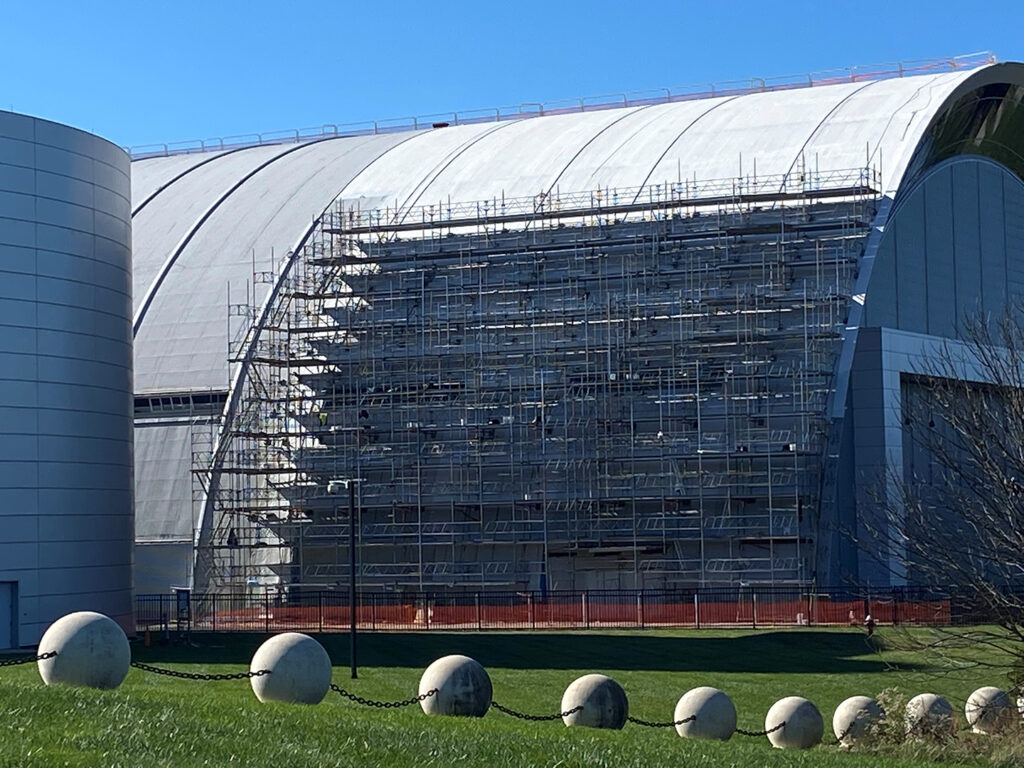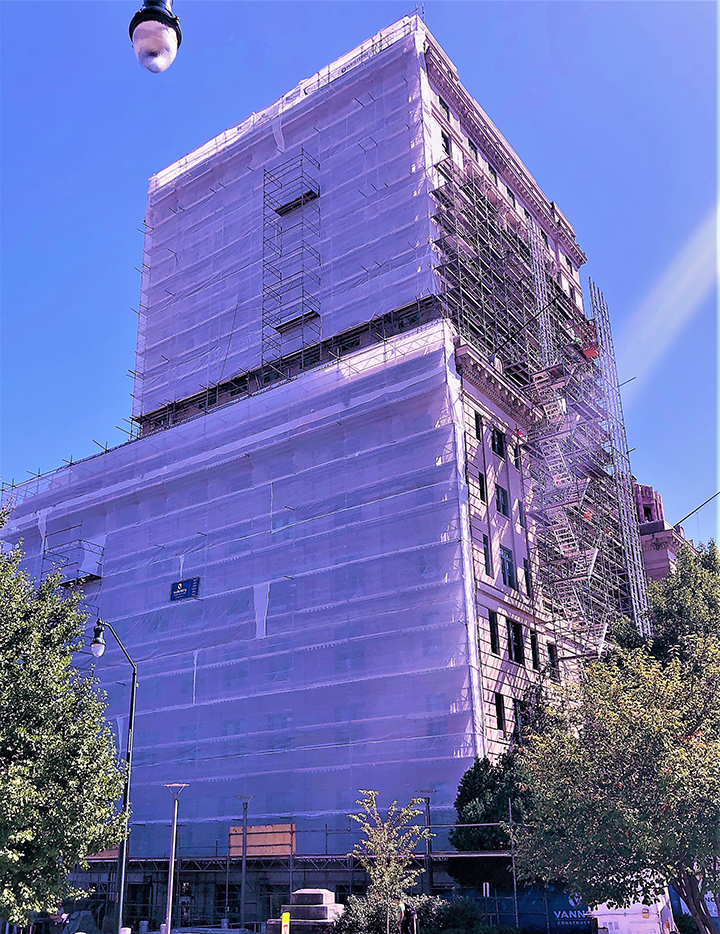 System scaffolding consists of horizontal and vertical structural components, referred to as standards and ledgers, and pre-engineered joints and supports or transoms. Standards carry the weight of the scaffolding, ledgers connect between standards to provide integrity, and joints and transoms increase the system’s rigidity.
System scaffolding consists of horizontal and vertical structural components, referred to as standards and ledgers, and pre-engineered joints and supports or transoms. Standards carry the weight of the scaffolding, ledgers connect between standards to provide integrity, and joints and transoms increase the system’s rigidity.
These components come together to provide an incredibly safe and stable foundation for jobs and work of all types. We’ll explain more about why System Scaffolding is the safest scaffolding, but first, we’ll briefly cover some of the other scaffolding options.
Alternative scaffolding options include aerial lifts, mast climbing scaffolding or swinging scaffolding, single scaffolding, suspended scaffolding, and tubular scaffolding.
Aerial lifts can be a suspended platform on a crane or elevator design to move materials and workers. Mast climbing scaffolding consists of a platform designed to ascend and descend along vertical towers via electrical drive units.
Swinging scaffolding systems have similar platforms but are not fixed and are typically suspended by ropes. Tubular scaffolding consists of steel tubes interconnected by a system of clamps for various angles and intervals.
All these alternative scaffoldings share common limitations on heavy load capacity and the type of guards and fall arrest equipment that can be used. Most of these options can cause workers to stretch, reach, step over, or climb and balance precariously to complete tasks or inspections.
However, these common scaffolding hazards are reduced or eliminated with the use of System Scaffolding. System Scaffolding meets and exceeds Federal and local safety standards, is strong and stable, easy to operate, and can be designed for work in precarious spaces.
Scaffoldings are strictly regulated by OSHA and local governments. OSHA establishes and updates universal safety rules, and local governments adopt laws governing scaffolding safety.
System Scaffolding meets and exceeds all Federal and local regulations due to its advantages over alternative scaffolding, which we’ll cover in more detail now.
System Scaffolding allows for work area, tools, and scaffolding structure examination at frequent intervals to prevent hazards from going unnoticed. Daily compliance checks for hazards are also much easier to conduct.
System Scaffolding designs use adequate materials and equipment and consist of compatible parts and components to accommodate weight onto a given platform. Load limits awareness consistent with project requirements prevents system compromise, structure collapse, and injury.
System Scaffolding includes guard rails, toe boards, barricades, and other guards that prevent falls or injuries from falling objects. They also include ladders or stairs, rather than rails or poles, to ascend or descend the structure.
You can read more about these required safety features in one of our previous blog posts.
 System Scaffolding is designed to be strong and stable, resulting in a safer scaffolding. System Scaffolding can be manufactured with high-strength galvanized steel, with connectors that are rigid and versatile. As a result, it can be sturdier than alternative scaffoldings and can manage heavier loads safely.
System Scaffolding is designed to be strong and stable, resulting in a safer scaffolding. System Scaffolding can be manufactured with high-strength galvanized steel, with connectors that are rigid and versatile. As a result, it can be sturdier than alternative scaffoldings and can manage heavier loads safely.
System Scaffolding can be lightweight and manufactured to require fewer fasteners and small parts, resulting in easy installation and less maintenance. It can be lighter than alternative scaffoldings yet safely built higher because it is more stable and less shaky.
System Scaffolding can be designed to be rigid and sturdy with regular use. With innovative System Scaffolding such as OCTO®, joints are designed to get tighter with use instead of alternative scaffolding systems that weaken with vibration or general use.
Frequent inspections are integral to the safe use of scaffolding. Therefore, an inspection must be performed by a competent person at the start of every shift and after any incident that may impact the scaffold’s structural integrity.
System Scaffolding is easier to use, and daily OSHA safety inspections are easier to conduct and safely completed because:
A vital project concern is ensuring workers can safely access all parts of a complex structure, such as a massive, curved roof exposed to high winds. The scaffolding system employed should withstand heavy wind loads while providing a safe worksite for both construction teams and the public.
System Scaffoldings, such as OCTO®, can be adapted in unique and innovative ways to address massive, curved roofs such as that of the Boeing Aviation Hangar at the Steven F. Udvar-Hazy Center of the Smithsonian’s National Air & Space Museum in Virginia.
The System Scaffolding employed in that project managed heavy wind loads by using customized lateral supports that meet OSHA and International Building Code requirements for strength and stability. It tightly hugged the curved roofline and provided safe worker access while the roofing membrane was repaired.
The Steven F. Udvar-Hazy Center shelters some of the Smithsonian’s largest aircraft and spacecraft and sees millions of visitors each year. Scaffolding Solutions provided the expertise and right type of System Scaffolding for the job.
To learn more about System Scaffolding or how Scaffolding Solutions can meet your project needs, click the link below.

